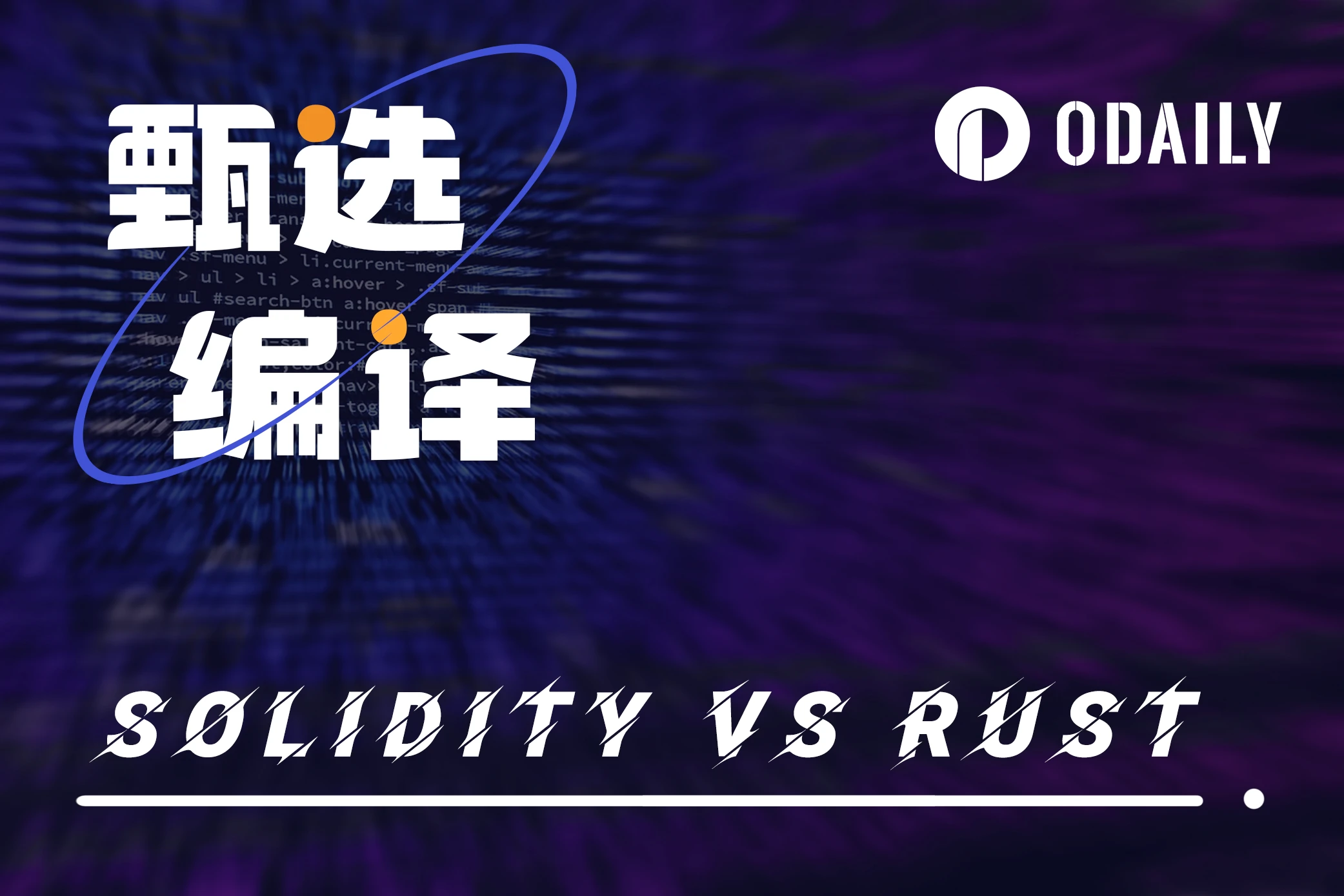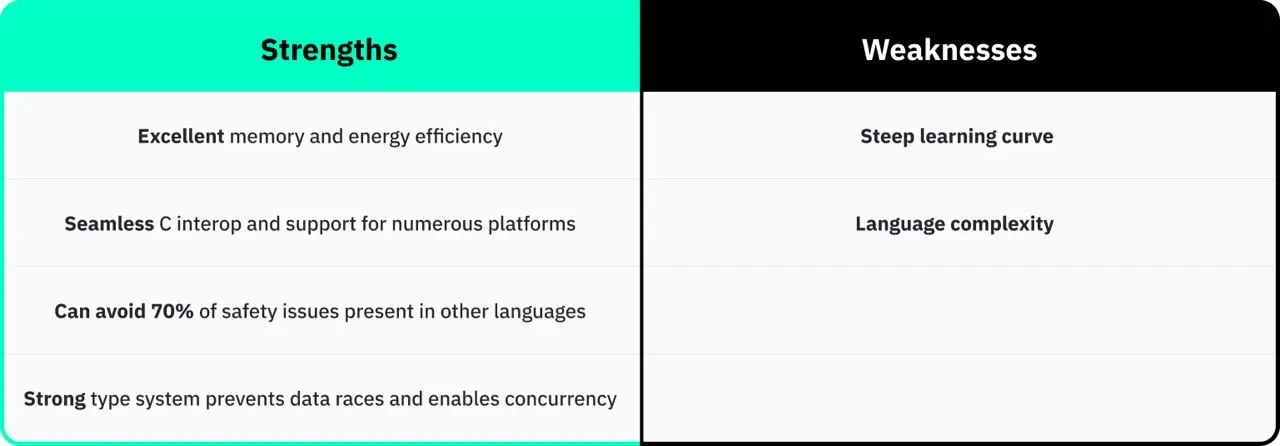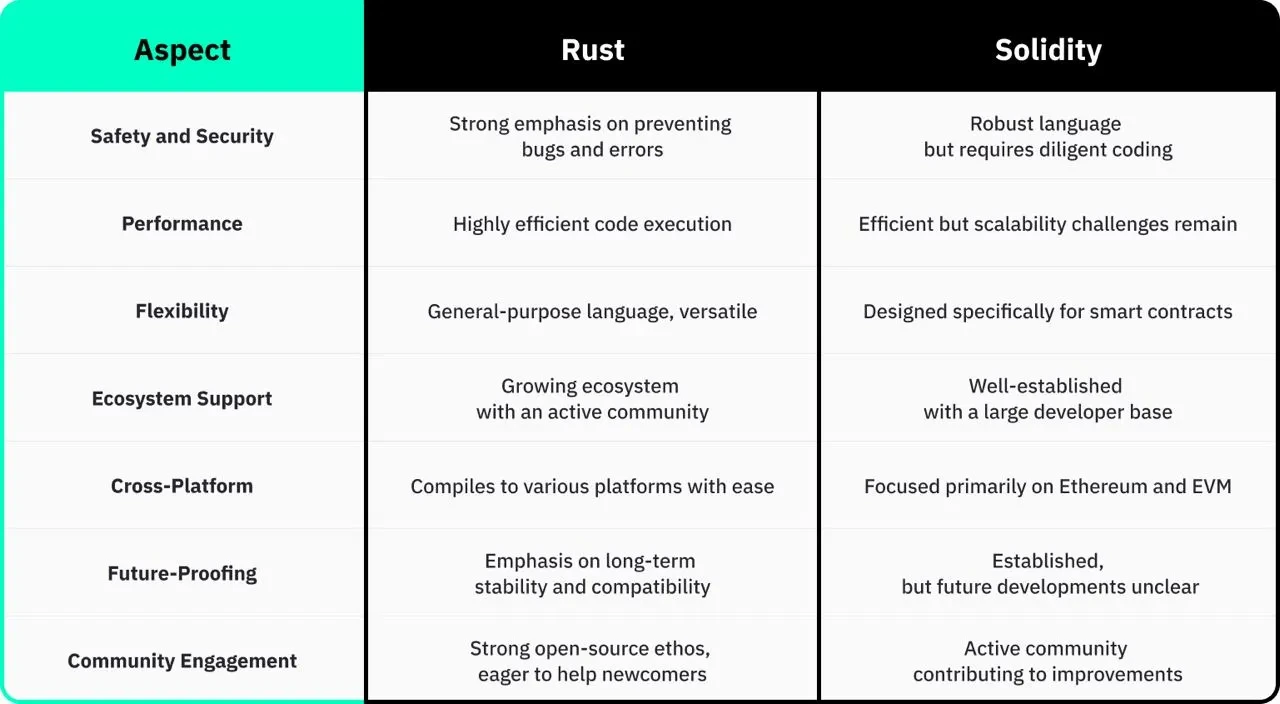Original author - Vara Network
Compiled - Odaily Jessica

Editors Note: Before choosing a specific smart contract language, it is wise to do some in-depth research and find out which language is suitable for your project. When it comes to writing smart contracts, two popular options stand out: Solidity and Rust, both with their own unique features. Vara Network published an article discussing the differences between Solidity and Rust (it should be noted that Vara chose Rust), and Odaily compiled it as follows.
Solidity: The most popular programming language for blockchain development
Solidity, as a high-level language, focuses on data and objects rather than complex functions. Being statically typed, it can catch errors during compilation, making it more reliable. It was created as a programming language for smart contracts on the Ethereum blockchain.
Solidity is not limited to Ethereum, its functionality is also supported by networks such as Polygon, Avalanche, Polkadot, Optimism and Arbitrum. While various Polkadot parachains have integrated EVM, not all have adopted this feature. Solidity is designed to be portable across devices with EVM actuators, resulting in smooth execution.
Factors that make Solidity a popular choice for smart contract development considering Ethereum compatibility:
1. Built-in conditions
Solidity makes it easy to perform actions based on specific conditions. Developers do not need to write complex conditional statements separately. Instead, they can specify these conditions in the source code. Once all requirements are checked out, the code will automatically perform the operations.
2. Data types become simple
Solidity has built-in support for common data types such as integers, strings, floats, and arrays. Additionally, developers can even create custom data types for their smart contracts.
3. Security during development
Compilers check developers for errors as they write their code and let them know about potential problems. This feature is very useful, especially when dealing with large and complex DApps.
However, Solidity also has its drawbacks.
It is a high-level language, so it is not as fast as other languages. Its limited speed can cause trouble when dealing with tricky smart contracts or large volumes of transactions. A design flaw in Solidity led to a hacker attack that resulted in the loss of funds. For example, in the DAO hacking attack in 2016,Hackers exploit recursive Ethereum sending vulnerability to steal $150 million。
Odaily Note: Solidity was first proposed by Gavin Wood and developed by Christian Reitwiessner in 2014. Solidity provides concepts available in most modern programming languages. It has functions, string operations, classes, variables, arithmetic operations, etc., and is compatible with JavaScript Programming languages such as , C++ and Python have similarities and are Turing complete.
Rust: First used by Solana
Since its release in 2015, Rust has gained huge traction among developers. It has always been (8 years now) the most popular or appreciated language on Stack Overflow.
So, why do developers (in general) love this programming language? Rust successfully solves the challenge of providing high-performance tools for designing applications without compromising security, effectively guarding against potential vulnerabilities. Rust has a strong type system and strict memory safety. This language ensures:
Performance – Rust is known for its fast and memory-efficient features. Since there is no garbage collector, Rust is suitable for powering performance-critical services, running on embedded devices and integrating seamlessly with other languages.
Reliability – Rust’s rich type system and ownership model ensure memory safety and thread safety, allowing developers to eliminate many errors at compile time, thereby enhancing the overall reliability of the code.
Productivity - Rust provides excellent documentation, a friendly compiler with helpful error messages, and first-class tooling. Its integrated manager and build tools, smart multi-editor support with auto-completion and type checking, and automatic formatters contribute to a smooth and efficient development experience.

Advantages and Disadvantages of the Rust Programming Language
Like all languages, Rust has some disadvantages, however, its advantages far outweigh the disadvantages of blockchain development. Additionally, the support of the community and how Rust handles its flaws and challenges makes the programming language attractive due to active participation. Asynchronous programming requests and implementations highlight Rusts participatory community.
Therefore, Rust is an excellent choice for building secure and robust blockchain applications. Its high performance and low-level control allow developers to optimize their code.
Odaily note: Rust was designed and released by Mozilla employee Graydon Hoare in 2006. It is a Low-level language with syntax similar to C++. Most blockchain systems usually choose to be compatible with EVM in the initial stage because it facilitates development. People quickly intervened based on their experience, but Solana chose Rust. Unlike Solidity, it was originally designed as a general-purpose programming language and is not limited to smart contracts.
Common strengths and differences between Solidity and Rust
Both languages are Turing complete, enabling them to handle complex computational problems efficiently.
Their multi-chain compatibility enables these languages to facilitate interoperability across various blockchain networks. Solidity has expanded its support to include Layer 2 and modular blockchains, sidechains, and EVM-compatible Layer 1 blockchains. Likewise, Rust has extended its support to different blockchain networks such as Solana and Near, and provides implementations based on the Substrate framework.
Although Rust and Solidity have similarities, they differ in various applications, as shown in the following table:

Difference Between Solidity and Rust
Conclusion
The advantages of Solidity and Rust provide a better understanding of which programming language should be chosen for DApp development. However, the differences between Solidity and Rust should also be compared to the trade-offs of each language versus the other.
The most obvious trade-offs of using Rust instead of Solidity for DApp development include slower compilation speeds and learning difficulties. Rust relies on the low-level virtual machine, or LLVM architecture, to generate code. For large projects, program compilation may take more than 10 minutes.
On the other hand, the Solidity vs. Rust debate also outlines the challenges of learning to program in Rust. For example, developers had to grapple with the concepts of ownership and lending systems. Additionally, Rust programs require creating a complete code base from scratch.
On the other hand, Solidity also brings quite a few setbacks compared to Rust. Outstanding issues are common issues in earlier versions of Solidity prior to 0.8. Another problem with Solidity is the difficulty of static analysis due to Soliditys Turing-completeness.
Both Solidity and Rust have unique features and challenges. Solidity is a popular choice for smart contract development because it is the core language of Ethereum. Rust, on the other hand, is the core language of Ethereum’s emerging competitor Solana.
This Solidity vs. Rust comparison also outlines how you can gain specific advantages and disadvantages by choosing one over the other. Ultimately, the choice of programming language depends on the use case required by the developer and the specific functionality required.










